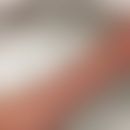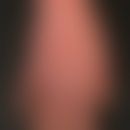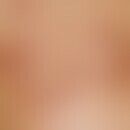Synonym(s)
HistoryThis section has been translated automatically.
Gougerot, 1925; Sjögren, 1933
DefinitionThis section has been translated automatically.
Rare autoimmunological disorder characterized by progressive dryness of the mucous membranes (sicca syndrome: "dry eye, dry mouth"), characterized by chronic, progressive inflammation and insufficiency of exocrine glands. The syndrome can be subdivided as follows:
- Primary Sjögren's syndrome: cause unknown, is not associated with collagenoses. Classification criteria for primary Sjögren's syndrome were established in 2016 by the American College of Rheumatology/European League against Rheumatism) (ACR/EULAR), see under Classification.
- Secondary Sjögren's syndrome: is associated with other diseases: rheumatoid arthritis (M06.99) and other collagenoses, furthermore in hepatitis B (B16.9) and C (B17.1) and primary biliary cirrhosis (K74.3).
You might also be interested in
ClassificationThis section has been translated automatically.
Primary Sjögren's syndrome (in adults): Association in 1/3 of cases with extraglandular symptoms, such as arthralgias (rarely non-deforming, recurrent arthritis), vasculitis, polyneuropathy, rarely CNS symptomatology (seizures, psychosis), interstitial nephritis, renal tubular acidosis, serositis, development of B-cell or pseudolymphoma. Usually evidence of antinuclear antibodies, anti-SS-A and/or anti-SS-B, and HLA-DR3. Primary Sjögren's syndrome (in children; rare): Association with Hashimoto's thyroiditis, anti-SS-A and/or anti-SS-B antibodies, and recurrent anular erythema.
For confirmatory diagnosis, see ACR/EULAR (2016) classification criteria:
Inclusion criteria:
- Feeling of dry eyes for more than 3 months; feeling of sand/gravel in the eye; use of > 3 x / day tear replacement fluid; feeling of dry mouth for more than 3 months; frequent drinking to be able to swallow dry food.
- if these points are answered positively at least 1 x - clarify exclusion criteria (Radiatio, Hepatitis C active, AIDS, Sarcoidosis, Amyloidosis, Graft versus host reaction)
- If at least 1 inclusion criterion is present and no exclusion criteria are present, proceed to classification criteria
- Histology of the salivary gland: Focal lymphocytic sialadenitis and focus score greater than or equal to 1 (3 points)
- SS-A/Ro antibodies(3 points)
- pathological findings in lissamine green or fluorescein stain in at least one eye (1 point)
- pathological Schirmer test small equal to 5 mm after 5 minutes in at least one eye (1 point)
- unstimulated salivary flow rate less than or equal to 0.1 ml/minute (1 point)
- if at least 4 points are reached here, it is a primary Sjögren's syndrome (sensitivity 96 %; specificity 95%)
Secondary Sjögren's syndrome:
- In the setting of inflammatory or infectious diseases (rheumatoid arthritis, collagenoses, pulmonary fibrosis, primary biliary cirrhosis) with detectable antibodies to salivary gland excretory ducts. There are frequent associations with chronic hepatitis C infection.
Occurrence/EpidemiologyThis section has been translated automatically.
The prevalence of primary Sjögren's syndrome (pSS) is between 1:100 and 1:1000, making it the most common connective tissue disease (Witte T 2019).
EtiopathogenesisThis section has been translated automatically.
Probably genetically determined autoimmune disease. Associations with increased expression of ICAM1 and HLA-DR antigen in conjunctival epithelia are described. Formation of circulating immune complexes leads to vasculitides. Furthermore, in larger collectives an association with chronic hepatitis C infection (13.4% of patients) can be detected. In this constellation, mixed cryoglobulinemia can be detected in large numbers.
ManifestationThis section has been translated automatically.
V.a. 4th to 6th decade of life; women are affected 9 times more often than men.
ClinicThis section has been translated automatically.
Insidious onset. Recurrent pressure-dolent salivary gland swelling. Xerostomia associated with dysphagia. Dry mucous membranes in the genital and anal tracts, prone to keratinization. Dryness of the eye (xerophthalmia) with keratoconjunctivitis sicca ( Schirmer's test). Dry nasal mucosa, possibly with epistaxis, recurrent parotid swelling, sebostasis (sicca syndrome), keratitis filiformis sicca.
Systemic: Pancreatitis, primary biliary cirrhosis, interstitial nephropathy, (poly)myositis, chronic bronchitis may be associated. Furthermore: Raynaud's syndrome (40%), arthritis (70%), lymphadenopathy (20%), esophagitis, tendency to allergies and gluten sensitive sprue (10x more frequent).
Dermatologic associations:
- Hypohidrosis, red, scaly skin,
- Anular, nodular, erythema exsudativum multiforme-like exantehem.
- Pernio-like lesions
- Brittle, thinning hair and nail growth disorders
- Pellagroid changes
- Vitiligo
- Raynaud's phenomenon
- Nodular cutaneous amyloidosis.
Coincidence with primary chronic polyarthritis (rheumatoid arthritis), progressive systemic scleroderma, systemic lupus erythematosus or polyarteritis nodosa (about 50% of cases) may be present.
Primary Sjögren's syndrome in children must be considered a special form. Recurrent anular erythema of the face and trunk accompanied by intermittent fever and Hashimoto's thyroiditis are present. Sicca syndrome is absent initially.
LaboratoryThis section has been translated automatically.
BSG and CRP significantly elevated
IgG, IgM elevation
ANA positive (80% of cases)
RO antibodies (SS-A) and LA antibodies (SS-B) positive (85% and 35%, respectively)
U1-RNP antibodies positive (30%)
Rheumatoid factors positive
Optionally detectable: antibodies against epithelial cells of the mucous glands; furthermore: muscarinic antibodies (anti-M3), antibodies against cytoplasmic antigens; anti-alpha-fodrin antibodies.
Cryoglobulinemia, if any; positive rheumatoid factor. Rare detection of thyroid antibodies.
HistologyThis section has been translated automatically.
Chronic lymphocytic sialadenitis with fibrosis and consecutive obliteration of the glandular parenchyma. Objectification of sialadenitis by the so-called focus score: Number of lymphocytic foci (defined as infiltrate foci with >50 lymphocytes) are counted in 4 mm² of glandular tissue. The threshold value for a positive focus = 1). Atrophy of the glandular acini; remains of dilated excretory ducts remain.
DiagnosisThis section has been translated automatically.
Schirmer test (reduced tear secretion), Rose-Bengal test (reduced staining), sialography, lip biopsy.
For questionnaire according to Vitali/classification criteria, see Tables 1 and 2.
For primary Sjögren's syndrome, there is > 90% diagnostic sensitivity and specificity if 4 of the 6 criteria are met, with autoantibody detection limited to anti-SS-A and -B.
For secondary Sjögren's syndrome, there is > 90% diagnostic specificity compared with a collagenosis group without sicca syndrome if the 1st or 2nd criteria plus 2 of criteria 3, 4, and 5 apply (criterion 6 is obligatory positive).
Exclusion criteria: pre-existing lymphoma, AIDS, sarcoidosis, graft-versus-host disease.
Differential diagnosisThis section has been translated automatically.
Mikulicz syndrome (no detection of SS-A or SS-B antibodies)
Erythema anulare centrifugum: systemic symptoms of Sjögren's syndrome are absent (Sicca syndrome: "dry eye, dry mouth).
Anular urticaria: systemic symptoms of Sjögren's syndrome are absent (Sicca syndrome: "dry eye, dry mouth).
Other figured exanthemas(erythema anulare rheumaticum, erythema papulatum cemtrifugum) .
Complication(s)(associated diseasesThis section has been translated automatically.
Development of neonatal lupus erythematosus in newborns of mothers with SSA/Ro and SSB/La antibodies; vasculitis (in 10% of cases), malignant lymphomas (MALT-NHL in about 5% of cases also marginal zone lymphomas).
External therapyThis section has been translated automatically.
Symptomatic therapy of the individual symptoms.
- Keratoconjunctivitis sicca or keratitis superficialis punctata: substitution of tear fluid with eye drops or gels, see Table 3. If necessary, use of bandage lenses (occlusion lenses) or tear duct plugs (punctum plugs).
Remember! Regular ophthalmological care to prevent complications such as corneal ulcers, bulb perforation, infections and shrinking of the conjunctiva!
- Xerostomia: Artificial saliva preparations, e.g. Glandosane flavoured and neutral or R236, citric acid glycerol 0.5/1 or 2% (NRF 7.4.), R066 if necessary apply or spray several times a day onto the mucous membrane of the mouth and throat. Mouthwashes with glycerine water and chewing gum are also recommended.
- Lubricatio deficiens: The dryness of the genital mucous membranes occurring in the context of Sjögren's syndrome can cause problems, especially during sexual intercourse. For local therapy, e.g. lubricants, emulsions or the vaginal gel pH 5 listed under NRF 25.3. are available, which are applied thinly to the vaginal entrance before intercourse. It should be noted, however, that the safety of condoms can be compromised.
- Dry nasal mucous membranes: For symptomatic treatment of rhinitis sicca, various drops and ointments (e.g. R181, Nisita Nasal Ointment, Bepanthen), emulsions and oils (e.g. Coldastop) are available, which can be applied several times a day to the nasal entrance.
Progression/forecastThis section has been translated automatically.
The primary Sjögren's syndrome is characterized by a chronic, mostly benign course.
Increased mortality results from increased lymphoma incidence (5%) and organ involvement (4x increased mortality risk with lung involvement). The prognosis of secondary Sjögren's syndrome is defined by the prognosis of the underlying disease.
TablesThis section has been translated automatically.
Questionnaire for the detection of dry eyes and mouth in Sjögren's syndrome (according to Vitali)
American-European Consensus Group (AECG) criteria
A safe primary Sjögren's syndrome is assumed if at least 4 criteria, including at least 1 of criteria 4 and 6, are positive. Safe secondary Sjögren³s syndrome requires the detection of criterion 1 or 2 and additionally 2 other positive criteria (only criteria 3,4,5) |
Overview of the most important finished medicinal products suitable for substitution of lacrimal fluid
Substance |
Concentration |
Application form |
Dosage |
Preparation |
Hydroxyethyl cellulose |
2% |
Drop |
3-4 times 1 trip/day |
Lacrigel eye drops |
| ||||
Hypromellose |
0,3% |
Drop |
3-6 times 1 trip/day |
Sicca-Stulln eye drops |
Artelac eye drops | ||||
Sic-ophthal sine eye drops | ||||
| ||||
Polyvinyl alcohol |
1,4% |
Drop |
3-6 times 1 trip/day
|
Lacrimal OK Eye drops |
Liquifilm N Eye drops | ||||
| ||||
Carbomer / Mannitol |
0,3% / 5% |
Gel |
4-6 times 1 trip/day |
Thilo-Tears Gel |
| ||||
Polyacrylic acid / Sorbitol / Cetrimide |
0,2% / 4% / 0,01% |
Gel |
4-8 times 1 trip/day |
Vidisic Gel |
| ||||
Hypromellose / Glycerine / Polyvidon |
0,2% / 1% / 2% |
Drop |
3-6 times 1 trip/day |
Lacrisic eye drops |
| ||||
Hypromellose / Dextran |
0,3% / 0,1% |
Drop |
3-6 times 1 trip/day |
Isopto Naturale eye drops |
| ||||
Polyvinyl alcohol / Dexpanthenol |
1,4% / 3% |
Drop
|
3-6 times 1 trip/day |
Siccaprotect eye drops |
LiteratureThis section has been translated automatically.
- André F et al (2022) Sjögren's syndrome. J Dtsch Dermatol Ges. 20: 980-1003.
- Brito-Zerón P et al (2015) How hepatitis C virus modifies the immunological profile of Sjögren syndrome: analysis of 783 patients. Arthritis Res Ther 17:250.
- Gorson KC et al (2003) Positive salivary gland biopsy, Sjogren syndrome, and neuropathy: clinical implications. Muscle Nerve 28: 553-560
- Gougerot H (1925) Insuffisance progressive et atrophie des glandes salivaires et muqueuses de la bouche, des conjonctives (et parfois de muqueuses, nasale, laryngée, vulvaire). "Serecheresse" de la bouche, des conjonctives, etc. Bull Soc franç Dermatol Syphiligr (Paris) 32: 376.
- Hansen A et al (2003) New concepts in the pathogenesis of Sjogren syndrome: many questions, fewer answers. Curr Opin Rheumatol 15: 563-570.
- Kuhn A et al (2000) Annular erythema in Sjogren syndrome. A variant of cutaneous lupus erythematosus? Dermatologist 51: 270-275
- Miyagawa S et al (2004) Autoimmune thyroid disease in anti-Ro/SS-A-positive children with annular erythema: report of two cases. Br J Dermatol 150: 1005-1008
- Segerberg-Konttinen M et al (1986) Focus score in the diagnosis of Sjögren`s syndrome. Scand J Rheumatol Suppl 61: 47-51
- Shiboski CH et al (2017) International Sjögren`s Syndrome Criteria Working Group. 2016 American College of Rheumatology/European League Against Rheumatism Classification Criteria for Primary Sjögren's Syndrome: A Consensus and Data-Driven Methodology Involving Three International Patient Cohorts. Arthritis Rheumatol. 69: 35-45
- Sjögren HSC (1933) On the knowledge of keratoconjunctivitis sicca (keratitis filiformis in hypofunction of the lacrimal glands). Dissertation text. Acta Ophthalmol (Copenhagen) supplement II: 1-151.
- Ueki H et al (1991) Dermatologic manifestations of Sjögren's syndrome. Dermatologist 42: 741-747
- Vitali C et al (2002) Classification criteria for Sjögren`s syndrome: a revised version of the European criteria proposed by the American-European Consensus Group. Ann Rheum Dis 61: 554-558
- Witte T (2019) Sjögren`s syndrome. Z Rheumatol 78:511-517.
Incoming links (57)
Acquired haemophilia A;; Acute tubulointerstitial nephritis; Amicrobial intertriginous pustulose; Antiphospholipid antibodies; Artificial saliva (nrf 7.5.); Autoimmune diseases; B cell activating factor; Castleman lymphoma; Ccp-ak; Cerebral venous thrombosis ; ... Show allOutgoing links (44)
Aids; Antinuclear antibodies; Artificial saliva (nrf 7.5.); Autoimmune diseases; Bronchitis chronic; Citric acid glycerol 0,5/1 or 2 % (nrf 7.4.); Collagenoses; Cryoglobulins and skin; Dexpanthenol solution 5% (nrf 7.3.); Erythema anulare centrifugum; ... Show allDisclaimer
Please ask your physician for a reliable diagnosis. This website is only meant as a reference.




